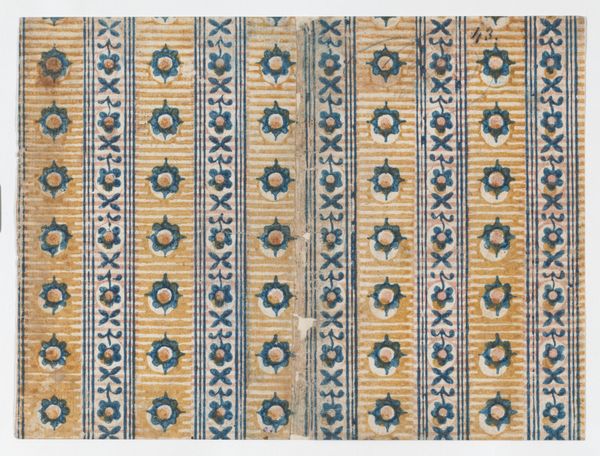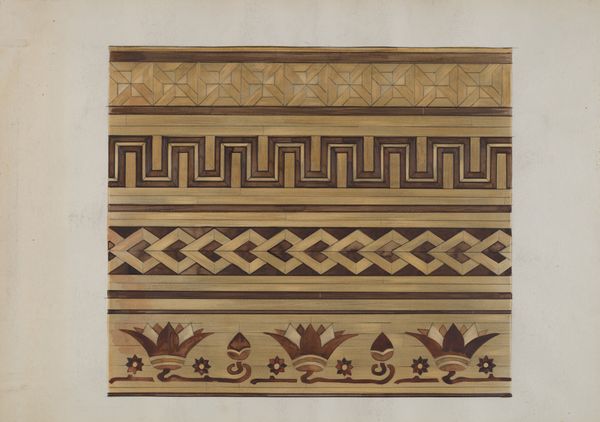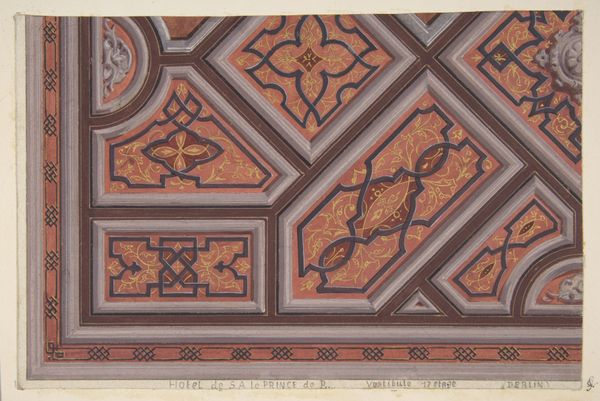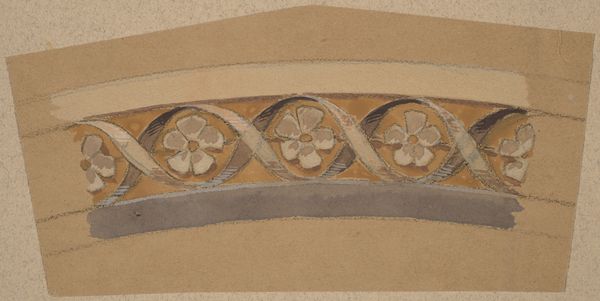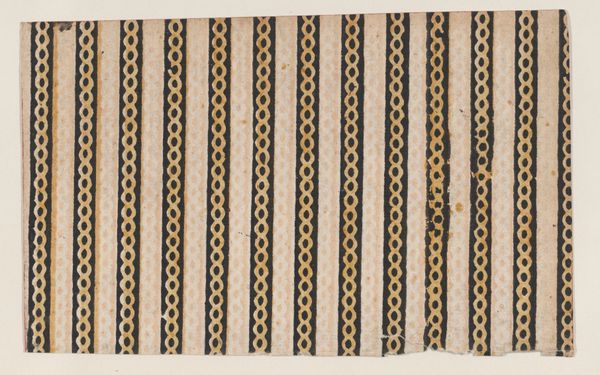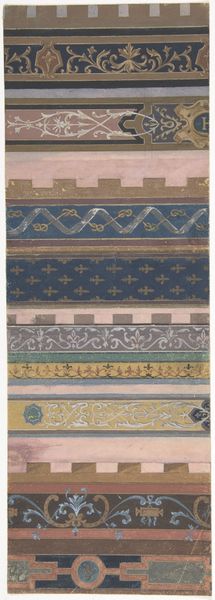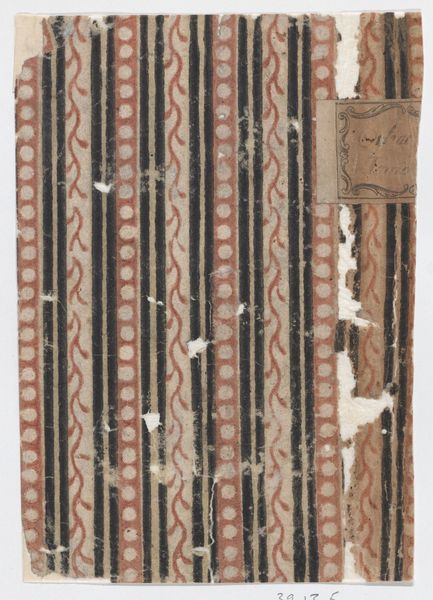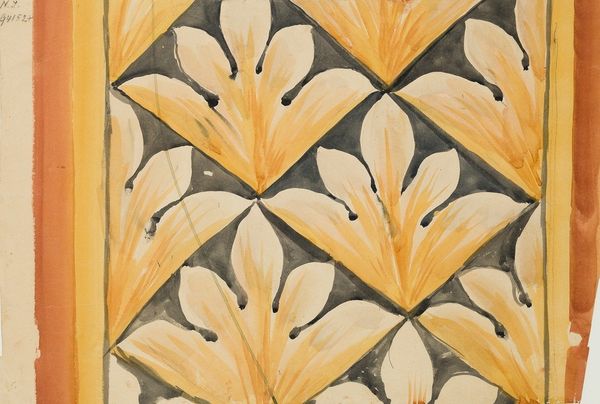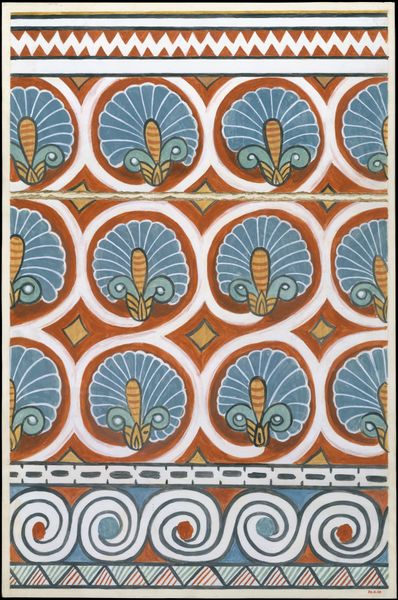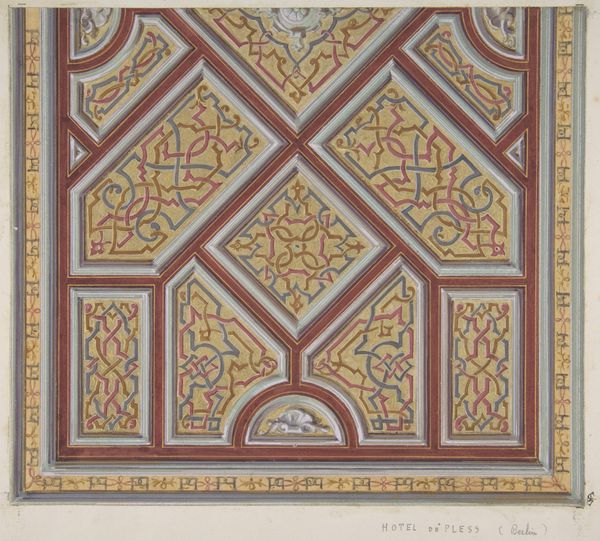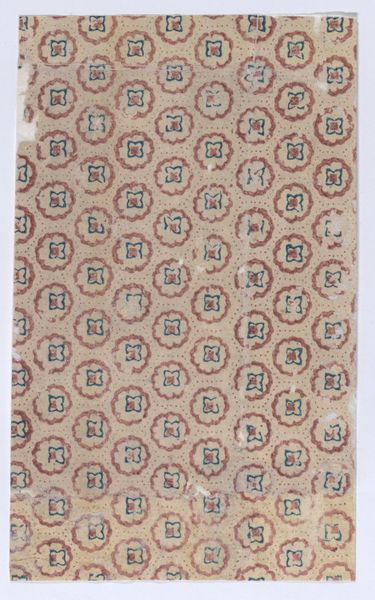
mixed-media, mural
#
pattern heavy
#
natural stone pattern
#
mixed-media
#
naturalistic pattern
#
pattern
#
ancient-egyptian-art
#
geometric pattern
#
abstract pattern
#
egypt
#
organic pattern
#
geometric
#
repetition of pattern
#
vertical pattern
#
pattern repetition
#
layered pattern
#
mural
Dimensions: H. 66 cm (26 in.); w. 74 cm (29 1/8 in.) scale 1:1 framed: h. 68.6 cm (27 in.); w. 77.5 cm (30 1/2 in.)
Copyright: Public Domain
Curator: Welcome. Today we're looking at "Ceiling Decoration," a mixed-media mural from around 1550 BC, now housed at the Metropolitan Museum of Art. Editor: It strikes me immediately with its sense of calm despite the rather rigid geometric patterning. There's something very soothing about the color palette. Curator: Agreed. Focusing on form, the composition employs a strong horizontal orientation, layered with bands of varying geometric patterns, isn't it? The piece’s balance is quite striking given its age and medium. Note the deliberate placement of each color and geometric element within the overarching design structure. Editor: And while the pattern is visually appealing, I can't help but think about its original location, some noble's estate maybe, its design communicating privilege, and power, speaking silently of social stratification in ancient Egypt. What statements about labor and ownership are subtly embedded here? Curator: The repeated motifs lend themselves well to semiotic analysis. We could interpret those x-shaped designs, framed within a square, as a signifier of solar or astral power, echoed through the repetitive nature, signifying perhaps the eternality of the pharaoh. Editor: I think that an elitist view might miss how cultural exchange shaped those designs and aesthetics. Egypt didn’t exist in a bubble; these patterns bear similarity with some Minoan and Near Eastern forms. It speaks of interconnectedness beyond borders. Curator: Yes, those potential exchanges of course impacted the formal articulation within Egyptian visual culture. Editor: Absolutely, and by interrogating these objects, like this wall decoration, through multiple critical lenses, we’re offered a far richer historical reading that examines the intersection of design and society, power, and global influence. Curator: A more thorough formal reading can elucidate what that social-historical inquiry uncovers! Each color plane and precise arrangement reveals a symbolic order reflective of Ancient Egypt's stratified society. Editor: So perhaps both avenues enrich the other. Ultimately, engaging with ancient art in this manner forces us to reckon with a legacy far beyond mere aesthetics; it allows us to question prevailing norms of taste and hierarchy that continue to permeate our present moment.
Comments
No comments
Be the first to comment and join the conversation on the ultimate creative platform.
